Hanfu accessories: men’s headwear
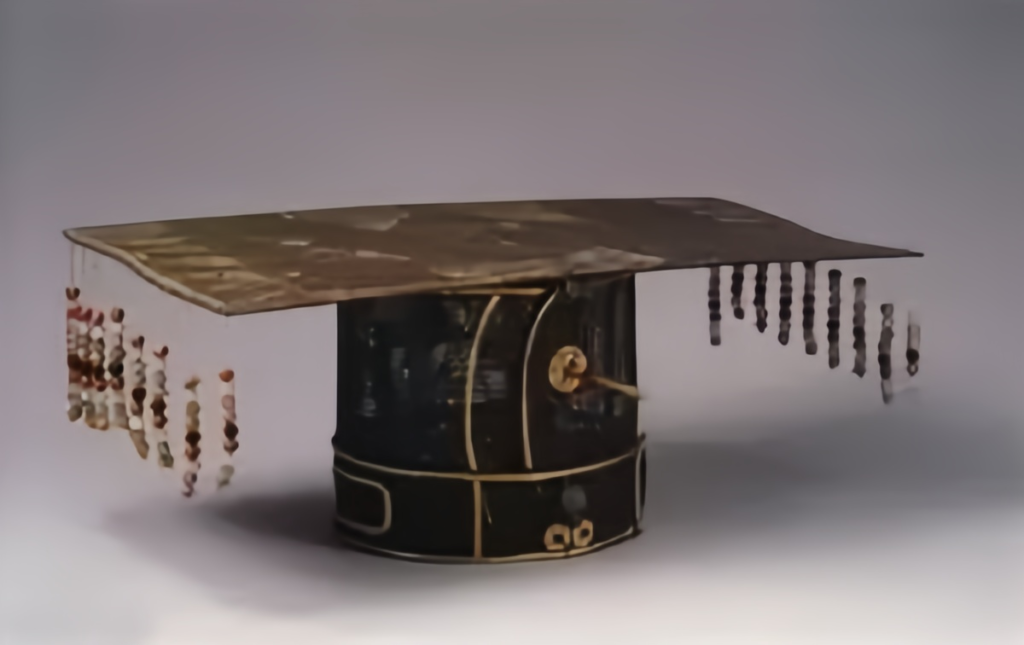
Yi Zi Jin (Single-Line Headscarf)
The Yi Zi Jin, also known as Tai Ji Jin, is a long strip with a wooden or jade buckle at the end, often carved with Tai Ji or Eight Trigrams designs—hence the name. Some scholars call it Fu Jin. It’s said to be a hair-wrapping style from mountain-dwelling Daoists, using silk to protect against wild branches. Actually, this should be called a net scarf, invented by Daoists and later spread nationwide by Ming Taizu. Ming’s Lang Ying in Qi Xiu Lei Gao writes: “One day, Taizu traveled incognito to Shen Guan Temple, spotting a Daoist weaving a net scarf under a lamp. Asked, ‘What’s this?’ He replied, ‘A net scarf to wrap the head, keeping all hair neat.’ The next day, an order summoned the Daoist as a court official, distributing 13 scarfs nationwide, so all, noble or common, wore them.” Daoism names nine hat styles as “Jin”—Hun Yuan Jin, Zhuang Zi Jin, Chun Yang Jin, Jiu Liang Jin, Hao Ran Jin, Xiao Yao Jin, San Jiao Jin, Yi Zi Jin, and more.
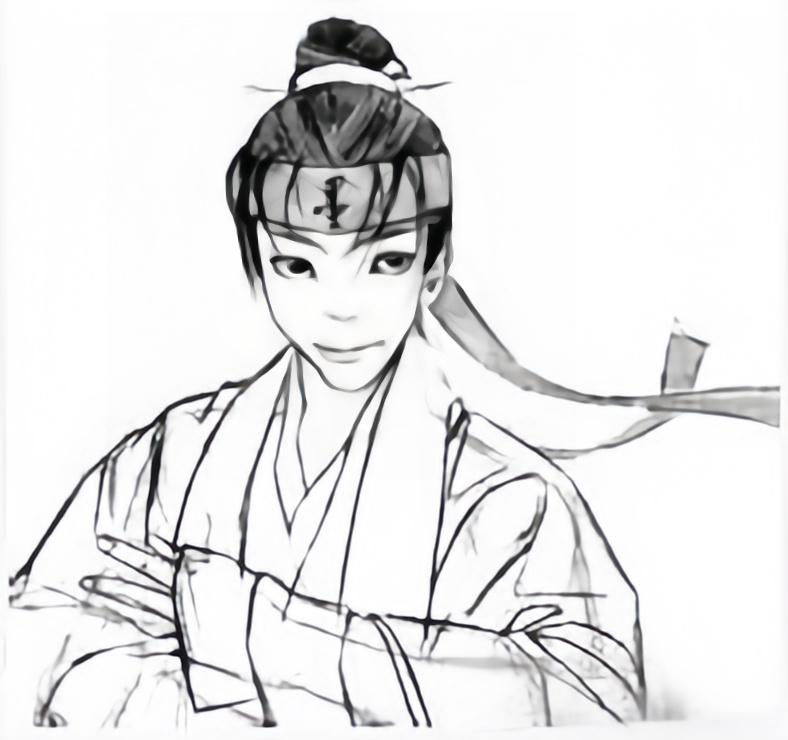
Xiao Yao Jin (Free Spirit Headscarf)
Xiao Yao Jin, also called Lotus Leaf Jin, was a commoner’s headscarf in the Song Dynasty, starting as Hua Ding Tou Jin. Later, scholars and even women wore it, with two tails hanging down the back, earning its name. Song’s Mi Fu in Hua Shi notes: “Early scholars wore deer-skin caps, a holdover, then ditched them… combing hair into corners, adding a turban. After combing, they’d go out. Later, silk replaced it, swept-up hair under a cap… then purple silk no-top scarfs called E Zi, still avoiding commoner styles. Later, candidates used purple gauze for long-top scarfs down the back, distinct from commoners—now scholars all rock these flower-top scarfs, styled as Xiao Yao Jin.”
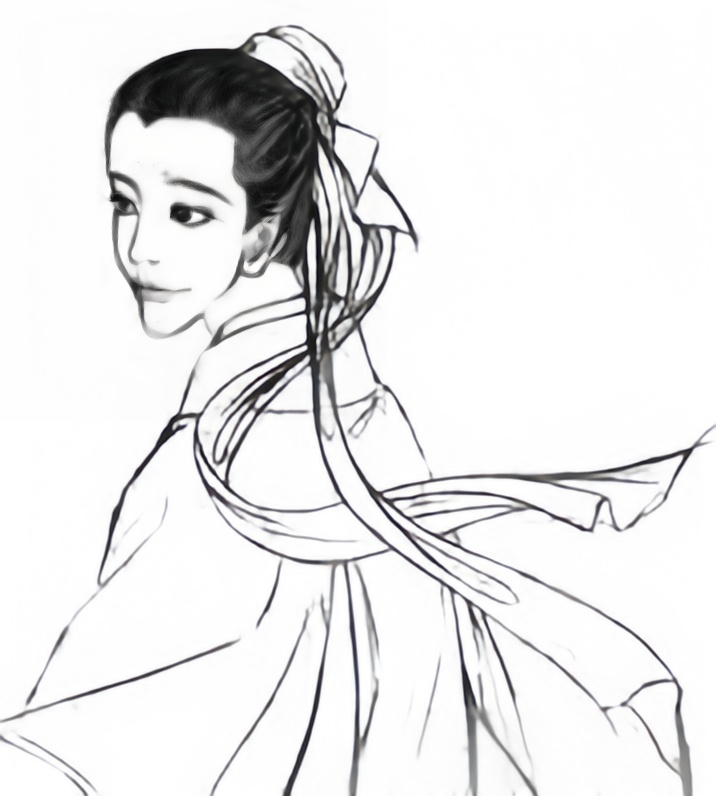
Zhuang Zi Jin (Zhuangzi Headscarf)
Zhuang Zi Jin, also Rush He Jin or Nan Hua Jin, is credited to the sage Zhuangzi. It’s square below, triangular above, roof-like. Also called Rush He Jin, it features a white jade front, symbolizing upright character. Wearing it feels as free-spirited as Zhuangzi, with a transcendent vibe.
Note: Before Ming, commoners and scholars wore Dao Jin; post-Qing, it’s mostly for Daoists. Older Daoists favor Zhuang Zi Jin, a Dao Jin variant.
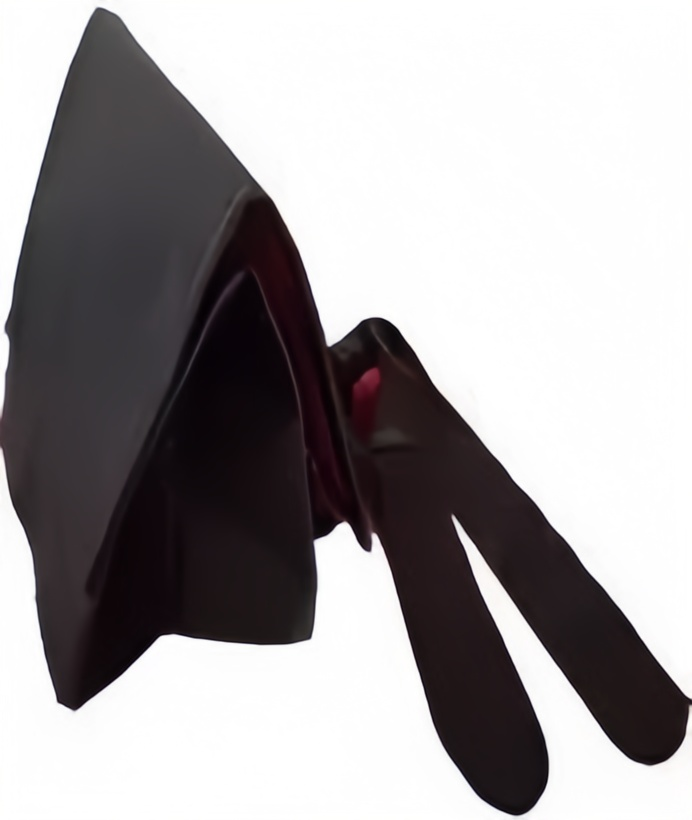
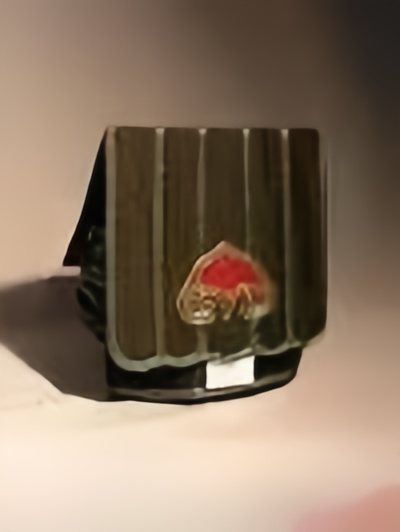
Guan Jin (Silk Ribbon Headscarf)
Lun Jin, with “Lun” read as “Guan,” is an ancient headscarf made of silk ribbons, usually blue. Legend ties it to Three Kingdoms’ Zhuge Liang, also called Zhuge Jin, later a scholar-general’s look. Jin Shu • Xie An Zhuan says: “Xie Wan wore a white Lun Jin, crane cloak, stepping on a board.” Song’s Chen Yu Yi in Wan Qing Ye Wang poem: “Cool air from Dongting after rain seeps into my Lun Jin.” Ming’s Wang Qi in San Cai Tu Hui • Yi Fu • Zhuge Jin: “Zhuge Jin, worn by Martial Lord Zhuge with a feather fan, commanding troops—named after him.”
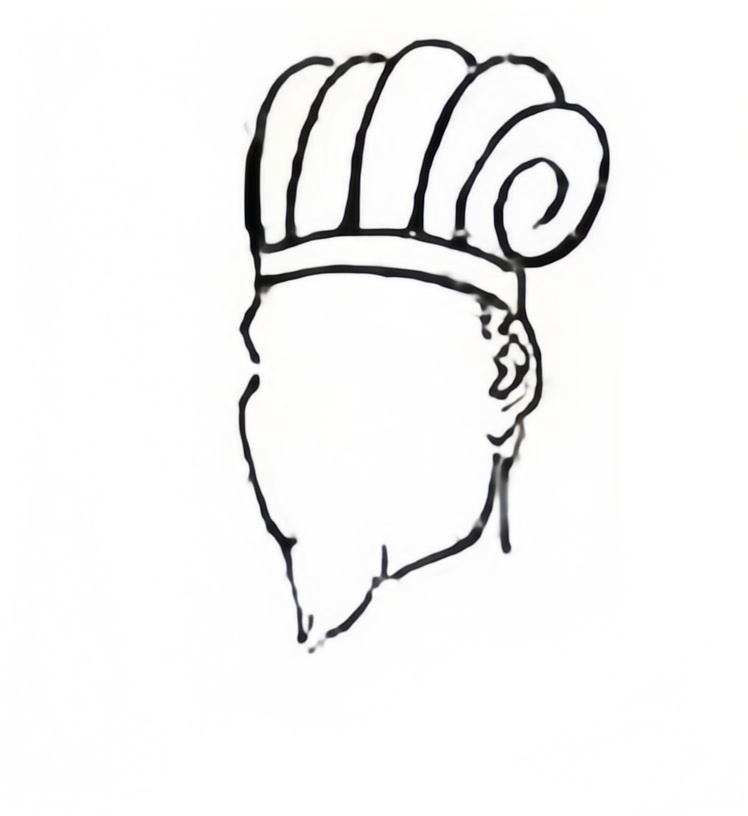
Jin Ze (Turban)
Jin Ze, a hat worn by ancient Han scholars, evolved from wrapping hair with a cloth, called Jin Ze since Han. Sui’s Daye Year 2 set rules—military Jin Ze with pants and jackets. Tang Zhaozong saw princes flaunting unique Jin Ze styles (Sui Shu • Yang Di Ji and Xin Tang Shu • Wu Xing Zhi).
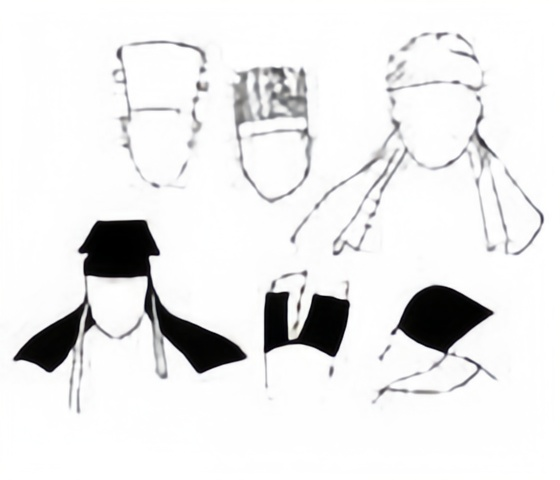
Ru Jin (Scholar’s Square Scarf)
Ru Jin, or Fang Jin, was the headscarf for ancient scholars. Ming called it Fang Jin, worn by students. Song’s Lin Jing Xi in Ji Shan Ji • Yuan Ri De Jia Shu Xi poem: “Firecrackers fade, all new, I alone mirror my Ru Jin.” Ancient scarfs used black crepe outside, lacquered vine or hemp inside. Ming’s Wang Qi in San Cai Tu Hui: “Ru Jin, once for scholars in Feng Ye robes with Zhang Fu caps—today’s scholar cap for pre-exam candidates.”

Dong Po Jin (Dongpo Headscarf)
Dong Po Jin, or Wu Jiao Jin, is linked to Song’s Su Dongpo, hence the name. It has four walls with an outer layer narrower than the inner, corners meeting at the brows when worn.
Features:
- Inner bucket shape.
- Outer rim shorter than the bucket.
- Tall bucket design.
Ming’s Yang Ji in Mei An Ji • Zeng Xu Bai Yun poem: “Hemp robe, paper fan, two strides, wearing a Dong Po Jin.” Dong Po Ju Shi Ji has “Villagers crowd to see the Wu Jiao Jin,” coining the name. Suzhou Museum’s Ming Li Shi Da Xi Yuan Ya Ji Tu shows Su Dongpo in a Dong Po Jin. Gu Jin Tu Shu Ji Cheng • Li Yi Dian, citing Ming Wang Qi San Cai Tu Hui: “Dong Po Jin with four walls, outer layer narrower, corners at the brows—named for Old Po’s wear.”
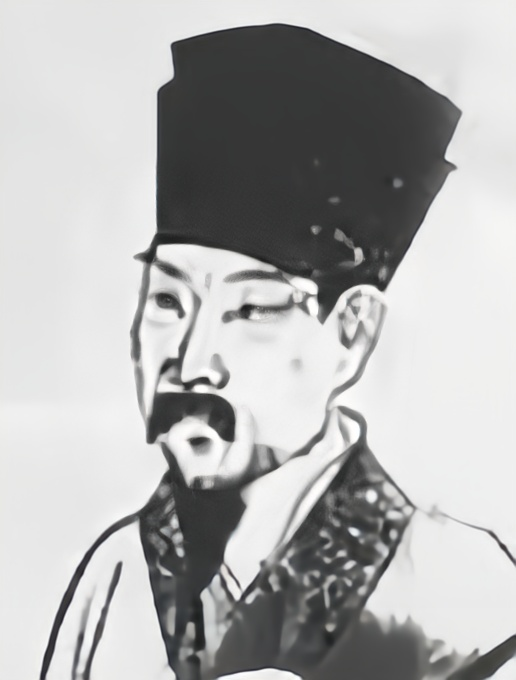
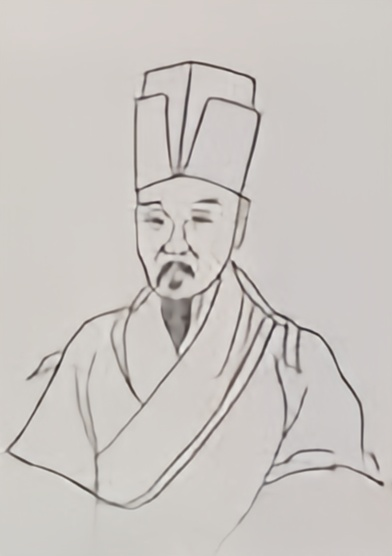
Yuan You Guan (Far Journey Crown)
Yuan You Guan, like Tong Tian Guan, has a front extension without a ridge, worn by princes. It had five seasonal colors—spring green, summer red, late summer yellow, autumn white, winter black. Han used four—spring green, summer red, autumn yellow, winter dark. Hou Han Shu • Yu Fu Zhi Xia: “Yuan You Guan, like Tong Tian, with a front tube, no ridge, for princes.” San Guo Zhi • Wei Zhi • Wu Di Ji: “March, the emperor raised Wei Gong above princes, granting a gold seal, red sash, Yuan You Guan.” Jin Shu • Yu Fu Zhi: “Yuan You Guan, Fu Xuan calls it a Qin crown, like Tong Tian but no front ridge, with a tube—worn by the crown prince, princes, emperor’s brothers, or sons as lords. Princes with titles wore official caps; only the prince and lords’ wives wore it always. The prince used kingfisher feathers and white pearls, others just blue silk.” Xin Wu Dai Shi • Liu Ling Zhuan: “Liu Ling set up a tent with treasures, a Hu Zi Guan and Yuan You Guan, purple Xia Ju robe, declaring fate, calling Liu Ling ‘Crown Prince Emperor,’ deciding state matters.” Also shortened to “Yuan You.”
Three Kingdoms’ Cao Zhi in Qiu Tong Qin Qin Biao: “If I ditch Yuan You, wear Wu Bian, drop red ties, wear blue sash… my deepest wish, my dream.”


Fu Jin (Wide Scarf)
Fu Jin, a men’s hair-binding scarf, signaled elegance. Ancient men wrapped fine silk fully around their heads; later, cut tails became Pu Tou. Popular in Song and Ming, scholars loved it. Made from a three-foot silk piece, it started with Han elites as a classy trend, evolving into Cao Cao’s “Pu Mao” in Wei-Jin. With Xuan Xue’s rise, crowns felt bulky—turbans ruled, seen in the “Seven Sages of the Bamboo Grove.” It shaped Tang-Song headwear. Ming scholars wore it, often with deep robes—hence “Fu Jin Shen Yi.” Korea’s Fu Jin echoes Ming’s influence, worn more by kids and students than scholars.
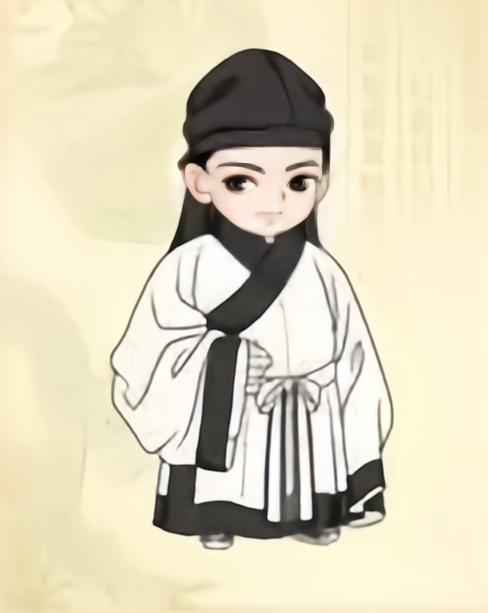
Jin Xian Guan (Advancement Crown)
Jin Xian Guan, or Jin Xian, was a ritual cap for meeting the emperor, originally for scholars, later all officials in Tang. Evolved from Zi Bu Guan, it reflected the duty to recommend talent, hence the name. Made of iron wire and fine gauze, it had beams to show rank—one, two, or three, with three being top. Front high (7 inches), back low (3 inches), 8 inches long, slanting with a sharp front “Zhan Tong” and open sides. Han saw it over hair buns, tied under the chin—unstable. Eastern Han added a flat Jin for stability, a laborer’s hair-wrap turned cap base. Qin warriors used red cloths with a “Yan Ti” edge; Western Han left tops open.
Evolution:
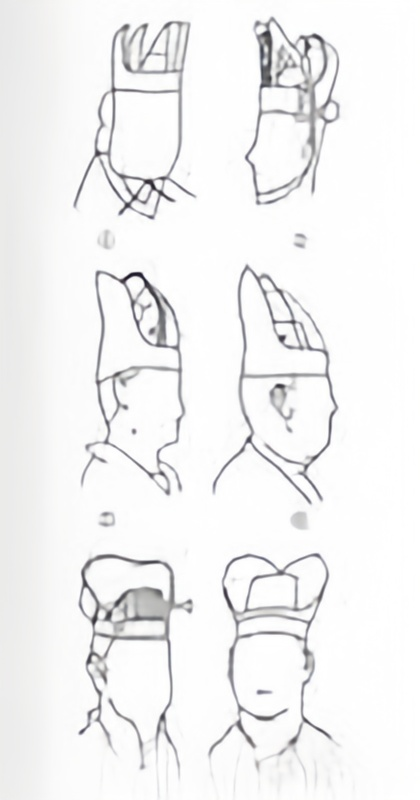
Liang Guan
A ridged ritual cap, square, front low, back high, tilting. San Cai Tu Hui replica shows princes with up to nine beams, dukes eight, marquises and earls seven with cage towels and Diao Chan (originally marten tails, later pheasant, with gold cicadas). Princes-in-law got seven without pheasant.
First-rank: Seven beams, jade belt and pendant, cloud-phoenix sash in yellow, green, red, purple, with blue net and jade ring.
Second-rank: Six beams, leather belt, rhino ring, like first-rank.
Third-rank: Five beams, gold belt, jade pendant, cloud-crane sash, blue net, gold ring.
Fourth-rank: Four beams, gold belt, glass pendant, like third.
Fifth-rank: Three beams, silver belt with raised gold, glass pendant, carved sash, blue net, silver-gold ring.
Sixth-seventh: Two beams, silver belt, glass pendant, sparrow sash, blue net, silver ring. Censors wore Xie Zhi.
Eighth-ninth: One beam, black horn belt, glass pendant, egret sash, blue net, copper ring.
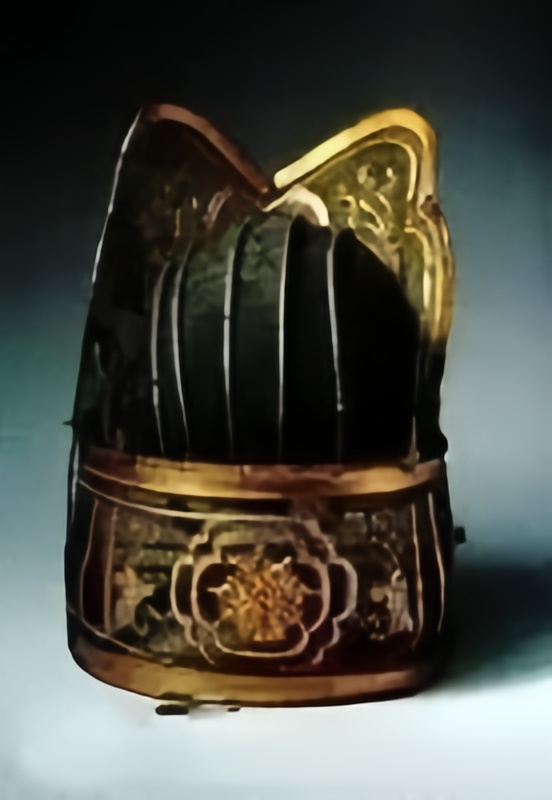
Mian Guan (Ceremonial Crown)
Mian Guan, the ritual hat for emperors, lords, and high officials, was the top headwear, paired with Mian Fu, red shoes, and sashes for grand rites. Hanfu splits into ritual and casual wear; Mian Fu, with Mian Guan and shoes, was the grandest for sacrifices.
The top is a long wooden board, Mian Ban or “Yan,” wrapped in fine cloth, round-front, square-back, low-front, high-back—symbolizing heaven’s round earth’s square and the emperor’s humility to hear the people, the root of “Mian.” A red “Tian He” band crosses the middle, like the Milky Way.
Front and back hang bead strings, Mian Liu. Li Ji • Yu Zao says: “The emperor’s jade Liu, twelve strands, deep front and back.” Kong Yingda notes: “Jade Liu uses multicolored silk with jade beads, called Yu Zao.” The emperor’s has twelve strands, lords fewer by rank. Zi Hui • Jian Bu adds: “All lords and officials had Mian, distinguished by strand count.” Shi Ben from Zhao during Warring States claims: “Huang Di made Mian Liu to shield the emperor’s eyes from distraction, ensuring virtue and dignity.” The beads sway, blocking vision as a reminder.
The cylindrical body has side holes, “Niu,” where a jade pin (Ji) threads through the bun to secure it. The base ring, “Wu,” stabilizes it. Side “Huan” cords with jade plugs, “Tian,” hang by the ears—Shuo Wen Jie Zi: “Tian fills the ears with jade.” Zuo Zhuan • Zhao Gong 26: “Two jin of coins, one Tian tied.” Du Yu and Kong Yingda explain: “A five-color cord with yellow cotton and jade Tian hangs by the ears, not inside, to remind the emperor to stay deaf to slander.” Emperors used jade, lords stone. Surviving Mian Guan, like Ming Ding Ling’s twelve-strand pairs, or nine-strand crowns from Shandong Lu Huang Wang, Jiangxi Xuan Yi Wang, and Hubei Liang Zhuang Wang tombs, are from Ming graves.

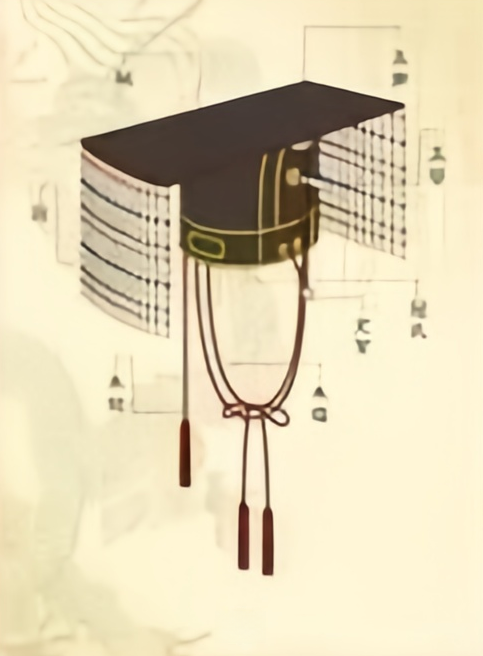
Tong Tian Guan (Heaven-Piercing Crown)
Tong Tian Guan, or Gao Shan Guan, was an emperor’s hat, second only to Mian Guan. Seen in Shandong Jiaxiang Han Wu Shi Ci stone carvings with labeled figures like Wang Qing Ji, Wu Wang, Han Wang, and Xia Jie, it matches Han Jin Xian Guan but with a higher front wall than the beam, called Jin Bo Shan or “high mountain” (Sui Shu • Li Yi Zhi). The slanted, cicada-patterned front wall sets it apart.
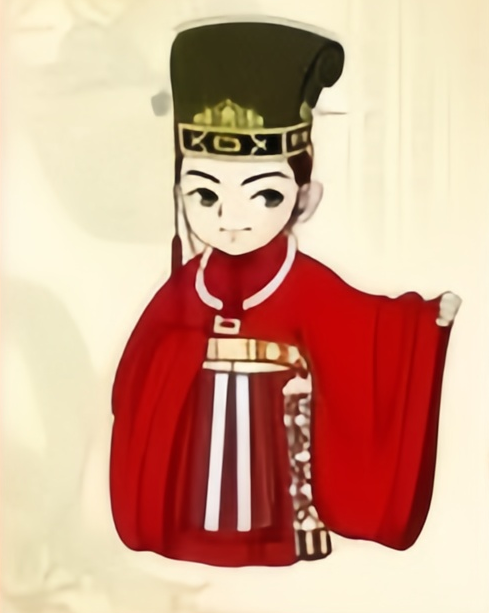
Wang Jin (Net Scarf)
Wang Jin, a net for men’s hair, was an ancient hair-bun cover, often black rope, horsehair, or palm fiber, edged with silk and small gold, jade, or tin rings. Tied with cords through the rings, it topped the bun, keeping hair neat—also called “One United Rivers” or “One United Harmony.” Beyond hair control, it marked manhood, worn under caps or solo. Ming Hongwu era tied it to Taizu, worn by all from nobles to clerks, exposed at home but capped outside—else, rude.
Use: Stretch the net over the head, gather hair inside, tighten cords. A top hole lets the bun through, then secures with a cord.
Meaning: Ming linked it to rule, hinting “gathering all (China),” symbolizing “one unified world,” worn by all, nobles or commoners, usually under caps for officials, though laborers skipped the formality for work.
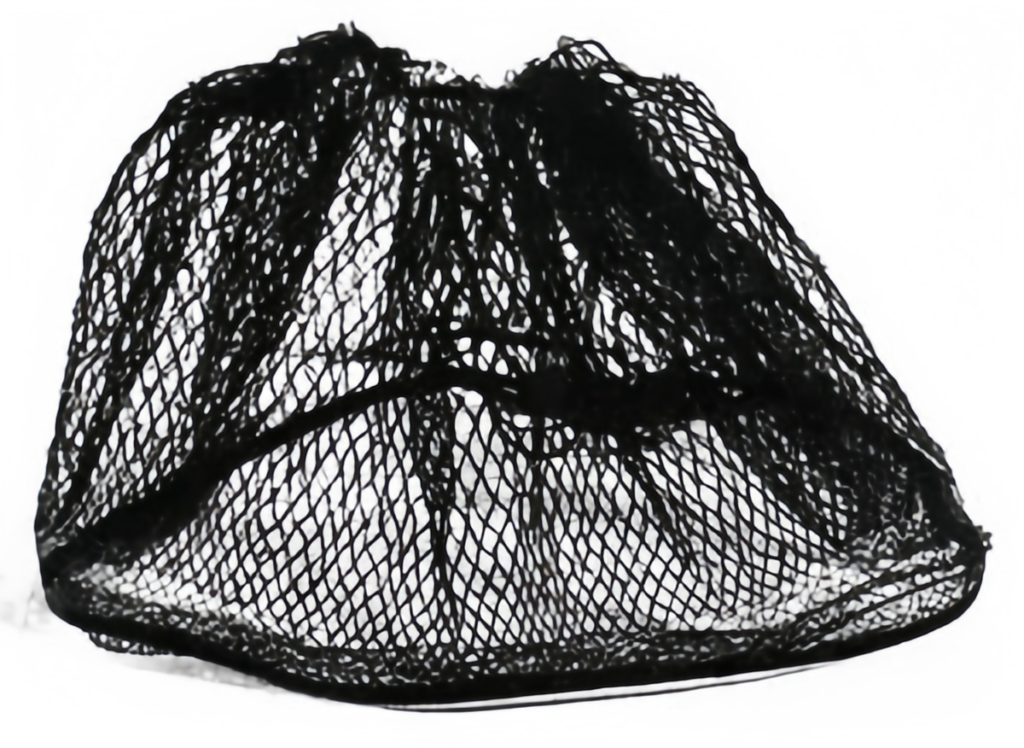
Yi Shan Guan (Wings of Virtue Crown)
Yi Shan Guan, named for its upward-folded “Shan” on the black hat, was an emperor’s casual crown. Simpler than Tang’s, it had a “front roof,” “back mountain,” and “gold folded corners” with two dragons chasing a pearl.
Jin Si Pan Long Yi Shan Guan: Woven with fine gold, edged with gold rims, two symmetrical coiled dragons meet at the top, heads up, tongues out, eyes wide, bodies curved, with a flaming pearl between them.
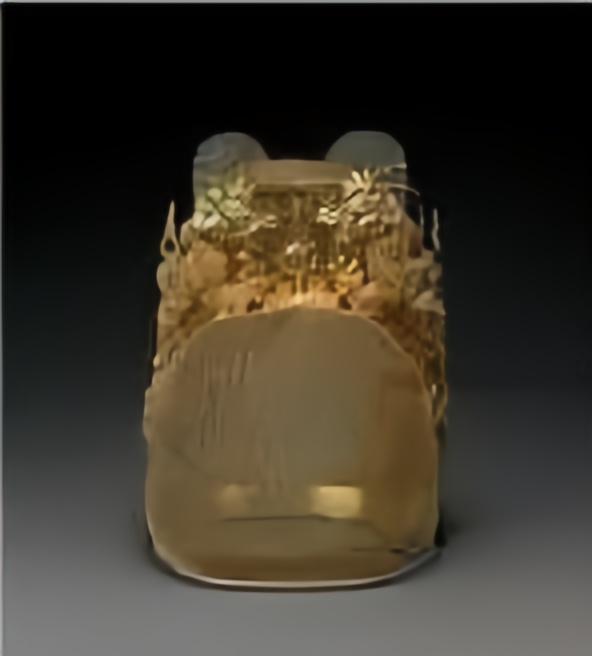
Pu Tou (Wrapped Turban)
Pu Tou, a head-wrap replacing caps to tame long hair, had four ties—two at the back, two flipped over the top, called “four legs” or “folded top.” A soft black gauze cap (once wood-framed), it sat over the bun, slightly raised and tilted forward. Ties crossed the top, with two hanging back, varying in length and style—flat and small early, then taller. It started in Northern Qi, refined in Sui-Tang.
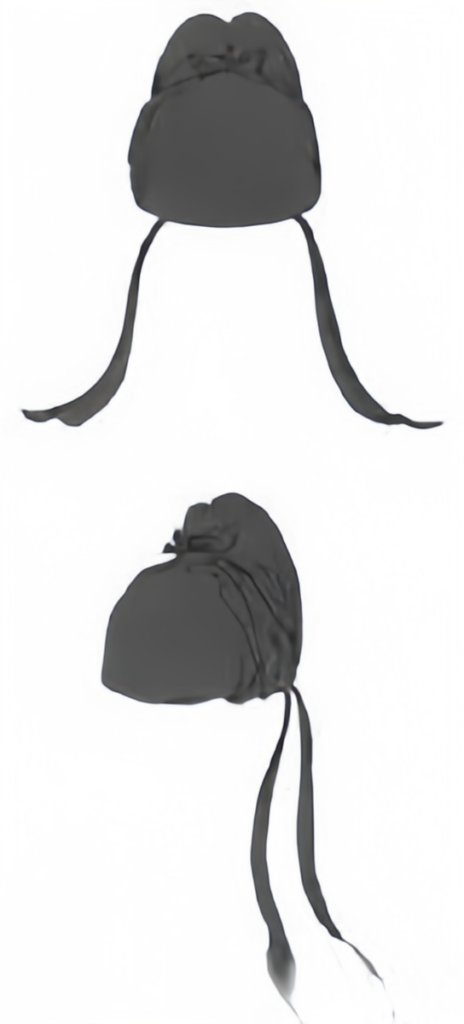
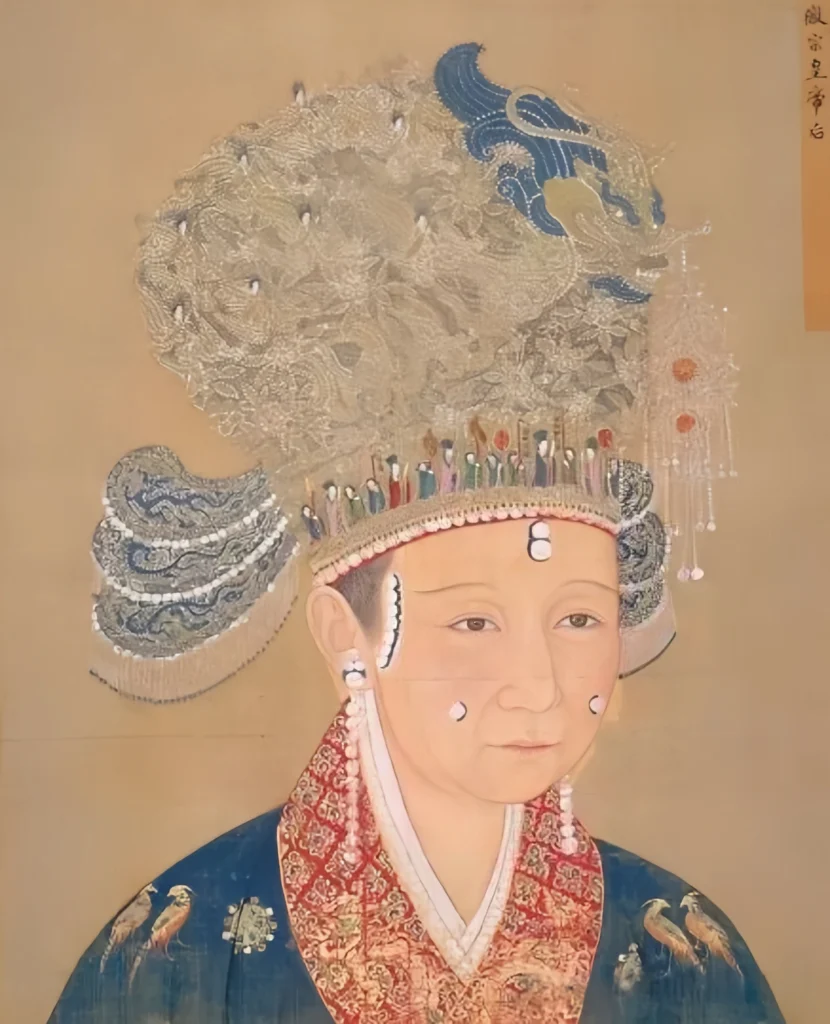
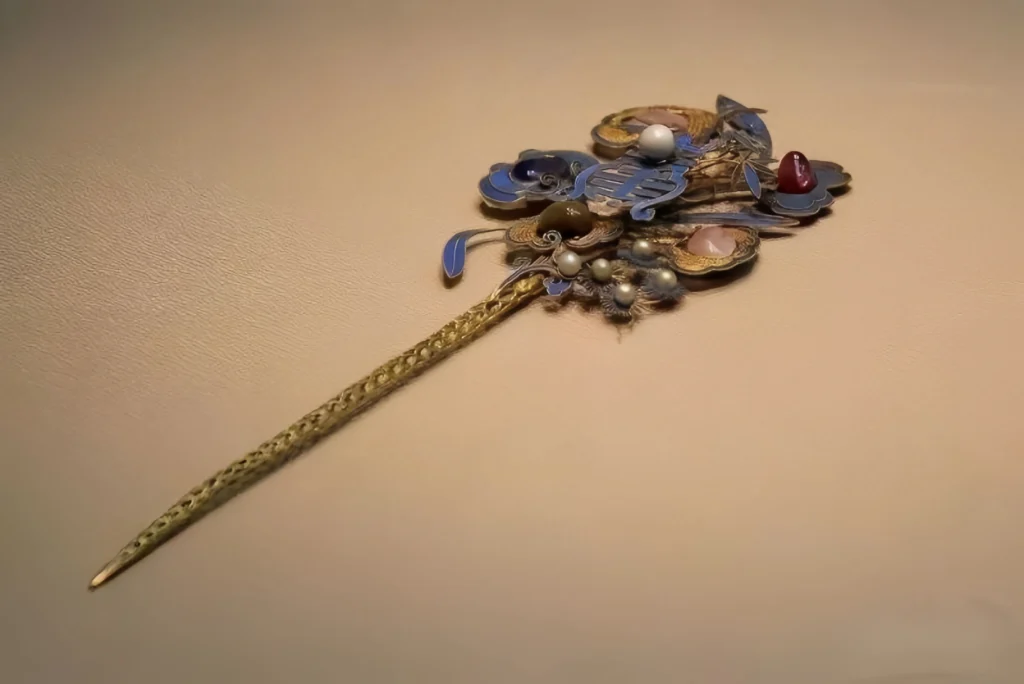
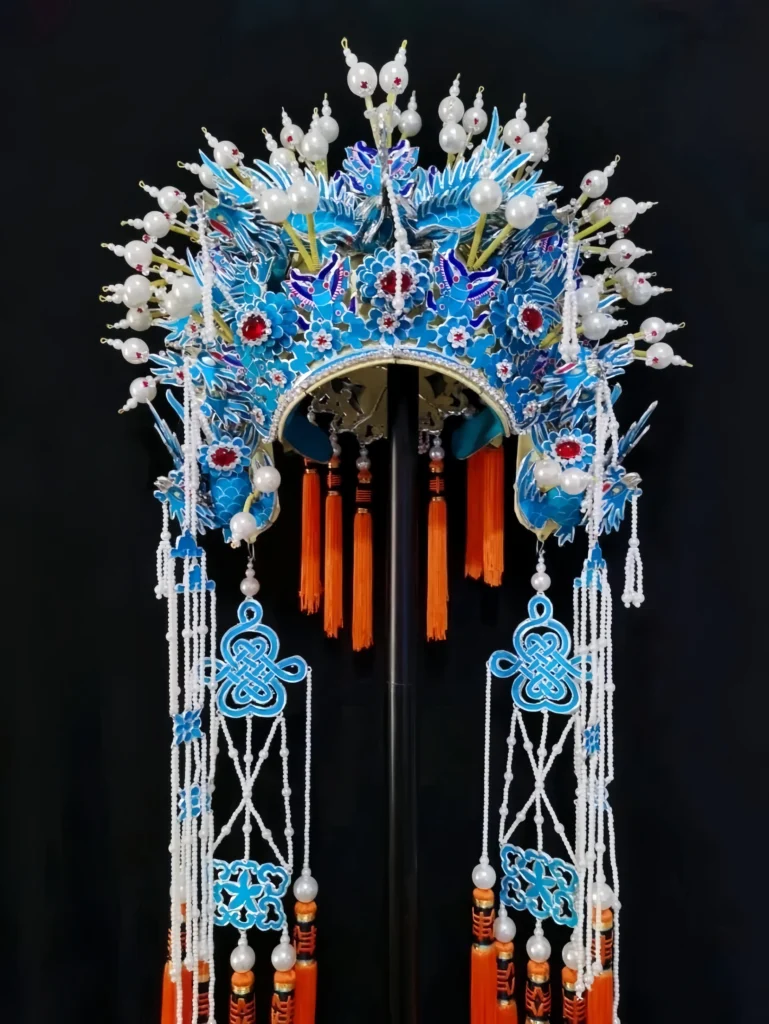


Responses